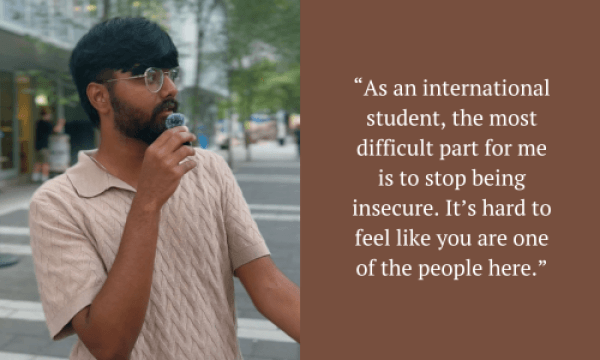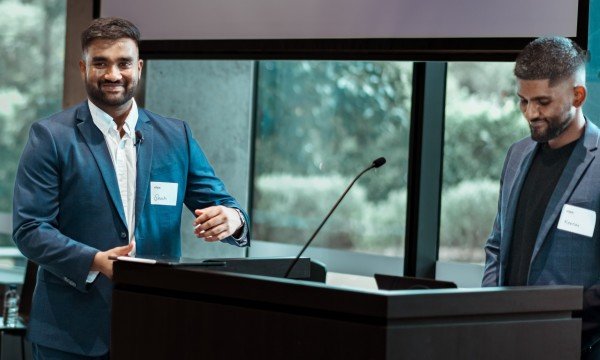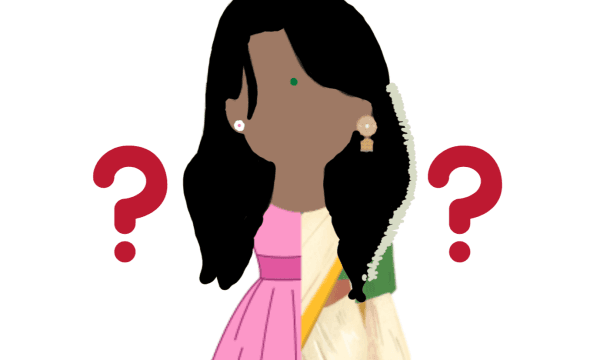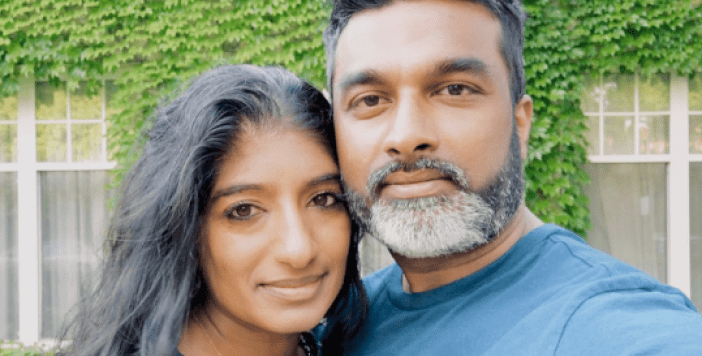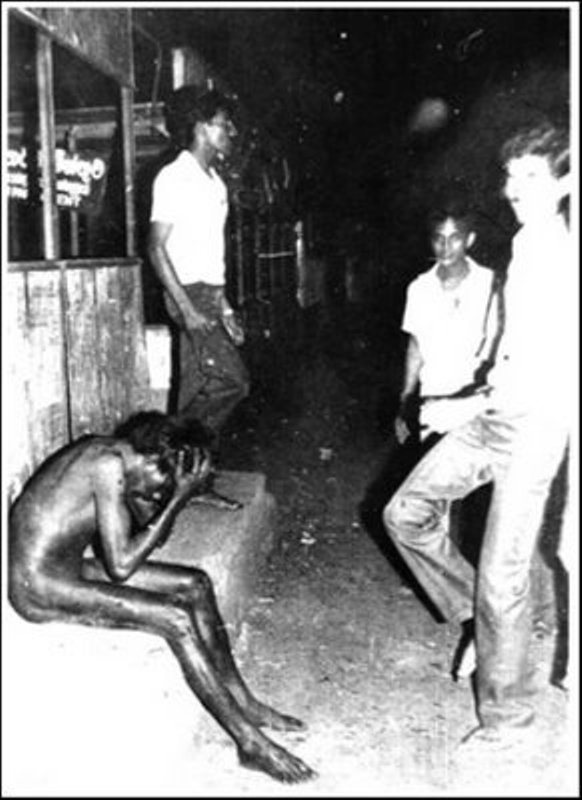
Photograph by Chandragupta Amarasinghe
Colombo is a city that I can never claim as my own. In my own configuration of exile and return, it provides a loud, pulsating footnote to the main story of Jaffna that I am in search of.
My earliest memory of Colombo is from 1992 when my family returned to Sri Lanka so that my father could make the dangerous crossing of the Kilali lagoon to see his ailing mother in Jaffna for the last time. Left behind in the big city, only snippets of my memory of that first return have survived: leaky roofs and squatting toilets in a Wellawatte guesthouse, meeting family who had migrated many years earlier seeking educational and economic opportunities, cakes and cream soda at Elephant House, watching Sinhala soap operas, and always pestering my mother to take me to the bookshops.
I have returned to the city several times since then – in 2003, 2011, 2012, 2013, and 2014. Yet, the city has remained only a transit point – somewhere to rest for a few days and soak in its bubble of virtue and vice before heading north.
--- In the Month of July Jean Arasanayagam
Childhood is far away
beneath a tree
playing with pebbles
skilfully tossing them from
back of hand
to palm
requiring a certain skill and
magical ritualistic incantations.
As one grows older
the pebbles grow too
into great stones and
rocks hurled with violence
smashed skulls spilled brains
splattering the pavements.
In the month of July
a man fled from his pursuers
he climbed a tree
the mob aimed stones at him
until they got him down
probably fell off, his grasp loosened
slippery with blood, his body already battered
and then they trampled him to death.
---
A couple of weeks ago, I found myself unexpectedly passing yet again through Colombo. This time, though, it felt different. As I stared at the travel itinerary in front of me, I was immediately struck by the coincidence of being in the city in the month of July. Thirty-one years ago to the month, Colombo and neighbouring towns burned as a state-sponsored anti-Tamil pogrom was viciously and methodically carried out by organized mobs, almost exclusively made up of ethnic majority Sinhalese, from July 24 – 30, 1983 resulting in the death of thousands of ethnic minority Tamils. There was injury to many more, destruction of homes and businesses valued at hundreds of millions of rupees, and internal displacement and banishment of thousands of hurt and humiliated Tamils whose pain found a welcome home in the separatist/liberation ideology of disenfranchised and disillusioned Tamil youth of the North and East of Sri Lanka. The anti-Tamil riots was a watershed moment in the country’s modern history and forever came to be known as Black July.
---
Yet Another Incident in July 1983 Basil Fernando
Burying the dead
being an art well developed in our times
(our psycho-analysts have helped us much
to keep balanced minds – whatever
that may mean)
there is no reason really
for this matter to remain so vivid
as if some rare occurrence, I assure you
I am not sentimental, never having
had a ‘break down’ as they say.
I am as shy of my emotions
As you are. And I attend my daily
tasks in a very matter of fact way.
Being prudent too, when a government says ‘Forget’
I act accordingly. My ability to forget
has never been doubted, never having had any adverse comments
on that score either. Yet I remember
the way the mob stopped that car,
the mob. There were four
in that car, a girl, a boy
(between four and five it seemed) and their
parents – I guess – the man and the woman.
It was in the same way they stopped other cars.
I did not notice any marked
difference. A few questions
in gay mood, not to make a mistake
I suppose, then they proceeded to
action, by then routine. Pouring
petrol and all that stuff.
Then someone, noticing something odd
as it were, opened the two left side
doors, took away the two children, crying and resisting
as they were moved away from their parents.
Children’s emotions have sometimes
to be ignored for their own good, the guy must have
thought. Someone practical
was quick, lighting a match
efficiently. An instant
fire followed, adding on more
to many around. Around the fire they chattered
of some adventure. A few
Scattered. What the two inside
felt or thought was no matter.
Peace loving people were hurrying
towards homes as in a procession….
Then suddenly the man inside
breaking open the door was
out, his shirt already on
fire and hair too. Then bending,
took his two children. Not even
looking around as if executing a calculated
decision, he resolutely
re-entered the car.
Once inside, he closed the door
himself…I heard the noise
distinctly.
Still the ruined car
is there, by the road-side
with other such things. Maybe
the Municipality will remove it
one of these days
to the Capital’s
garbage pit. The cleanliness of the Capital
receives Authority’s top priority.
---
Needless to say, it certainly felt strange being in the city at this time of the year as a (not-so-) young Tamil man, and from the much maligned Canadian diaspora no less. I immediately resolved to do what I should have done a long time ago: I decided to walk down the lanes, roads, streets and mawathas that witnessed the terrifying nights of broken glass all those years ago which I had only read and talked about in proxy over the years having never been directly affected myself. So I hired a taxi, wrapped myself up in the security afforded by the privilege of being a guest at an expensive hotel in the city, quickly scribbled down a list of names of streets and buildings for my driver, and set off to spend much of the day remembering Black July in my own way.
I am now sharing this selection of images that I captured throughout the day for a few reasons.
The archaeology of memory in Sri Lanka, and specifically who gets to remember what and when, remains one that is tightly controlled. This is very much the reality especially for Tamils in Northern Sri Lanka where “defeated” markers of memory have been bulldozed to make way for “victory” memorials. In Colombo, however, the flats where Tamils lived (and some still live in), the streets in which they were hacked and burned alive, and temples and schools where they sought refuge still stand. Since these “memorials” survive, one can use facts, testimonies and other knowledge to excavate from this landscape, the layers that time has buried.
A Sinhalese friend recently told me, rather horrified, about a young person who had told her that she was taught that Black July was instigated by the JVP. Such ignorance of Black July among young people in Sri Lanka on one hand and selective memorialization and narrativization for young people growing up in the diaspora on the other seeks to subvert any attempts to truly understand what our shared history is. It is also such ignorance that allows for mistakes to repeat themselves. A case in point is the recent macabre, almost textbook, re-enactment of Black July in the anti-Muslim riots that erupted in Sri Lanka last month. We promised never again, and yet we allowed for that horror to happen again.
For these reasons and more, this is my own contributive note to remember our history, hidden in plain sight.
This note would not be possible without the excellent online archival work that has been done on Black July over the years by TamilNation, Canadian Tamil Congress, Groundviews, Ilankai Tamil Sangam, BlackJuly.info, Wikipedia, and other sources. The selection of Arasanayagam and Fernando’s poems are from Shyam Selvadurai’s many roads through paradise: An Anthology of Sri Lankan Literature.


Borella Junction
"A section of the crowd marched up D. S. Senanayake Mawatha to nearby Borella where they destroyed Tamil-owned Nagalingam Stores. The mob, which was now around 10,000, attacked, looted and set fire to any building near Borella junction that had a Tamil connection, including Borella Flats." [https://en.wikipedia.org/wiki/Black_July]

Borella Junction
"All our sources are agreed that the initial mood of the crowd that left Kanatte was anti- government. According to some of them, about 10.00 P.M., fresh gangs were brought to Borella junction which raised the anti-Tamil cry. They are identified as government gangs. According to these reports when the crowd from Kanatte encountered the gangs freshly brought in, there was a hoot. Thereafter, the anti-government cry subsided and the anti-Tamil cry became dominant. This according to some sources, was the beginning of arson and the murder of Tamils who fell into the mob." [https://www.colombotelegraph.com/index.php/sri-lankas-black-july-borella-24th-evening]

Bambalapitiya
"On the way home I saw the mobs armed with iron rods and petrol cans torching cars, attacking people, looting shops and there were so many people carrying away things they had plundered and pillaged from Tamil shops and houses. Many of them were dancing in the street and it was a blood-curling experience to me." [source: https://blackjuly83.com/Survivors19.htm]

Bambalapitiya Flats
"Suddenly I heard loud noises and saw a big group of thugs carrying knives and axes walking towards the direction of our house. They were searching for Tamil houses. Our neighbor pointed our house to the leader of the mob. The fear of death washed over me. I felt a current going upward through my spine. I ran inside screaming, “Everybody run! Everybody run!” I reached the back balcony and jumped from there. I landed first on my left heel. I remember having terrible pain there but managed to jump over the wall to the other lane. But I didn’t know what happened to everyone at home." [https://blackjuly83.com/Survivors10.htm]

Bambalapitiya Flats
"On the third day afternoon we heard a loud noise of people shouting in Sinhala outside, probably 50/60 metres away. Some hooligans were damaging a house. We heard windows and doors being broken and people screaming in fear. There were several Tamils living down the lane and we thought we would be traced soon." [https://www.thesundayleader.lk/20080727/FOCUS.HTM]

Bambalapitiya Flats
"Bambalapitya flats was the only community in Colombo which was not affected. Sinhala dwellers of the flats protected their Tamil neighbors. Hence, not a single house was attacked. When a group of mob came to attack the Bambalapitya flats from the seaside on July 26, 1983 at about 3.30 pm, a young man named ChamleyAbysuriya and a group of Sinhala boys rushed to them and said to them in Sinhala 'We are attacking here you guys go somewhere else...' so the mob believed them and went towards Wellawatte. Soon the Sinhala youth of Bambalapitiya flats organized a vigilant service to protect the lives and property of their Tamil neighbours." [https://www.lankaweb.com/news/items/2010/04/27/the-black-july-1983-that-created-a-collective-trauma]

Kathiresan Kovil
"Conditions in two camps I visited in the Bambalapitiya district of Colombo are appalling. Three thousand Tamils sleeping on the floors of the Hindu temple were sharing six stinking toilets, all without water for washing. There were only two taps working in the camp and Red Cross volunteers complained the water was too dirty today to make milk for the infants. No foreign food supplies had reached the temple since it opened on the 25th of July. [https://www.tamilnation.co/indictment/genocide83/gen06.htm]

Kathiresan Kovil
"In Colombo, it was the season of the annual Vel cart festival, which coincides with the Katargama festival season, and attracts to it all the castes and all the classes and all the races of Sri Lanka. The Vel Cart had come from Pettah to the Bambalapitiya (Hindu) temple when the disturbances broke. The chariot was set on fire." [https://www.tamilnation.co/indictment/genocide83/gen05.htmv]

Pillayar Kovil
"On July 26th, we were threatened by some of the mob surrounding the neighbourhood. We were forced to leave the house. We left the house with the help of some neighbours. The refugee camp was in Colombo Hindu temple in front of Bambalapitiya Flats. We were terrified to see all of our friends and our community, mostly all Tamils, were injured and crying. They mostly had lost everything and it was a pathetic scene. At the refugee camps the sanitary conditions were very poor and the food was also not very healthy. With the help of some of our friends, we were able to survive. In the nights, with my children, I had to go out and sleep under the tree – which was also not very safe. We were there nearly, altogether 6 days. Black Friday was the terrible day - we had some of our friends who left the camp to buy some food, never returned back. Later, we came to know that they were killed." [https://blackjuly83.com/Survivors2.htm]

Ratnakara Road
"The mob continued their attacks in Wellawatte and Dehiwala on 26 July. There were 53 houses on Ratnakara Road. The 24 Tamil owned/occupied houses were burnt. Three houses were owned by Sinhalese but were rented by Tamils. The mob removed the property in these three houses to the road and burnt it." [https://en.wikipedia.org/wiki/Black_July]
"My parents and sisters were living down RatnakaraPlace, Dehiwela. My eldest sister is married to a Sinhalese, who later I found out to be the person who cared and took charge of our family. If not for his care, I would have lost faith in all." [https://blackjuly83.com/Survivors5.htm]

Anderson Flats
"Mobs entered Tamil flats identified from lists, smashed property and threw refrigerators over the balcony, but did not harm the people if they did not resist." [https://www.colombotelegraph.com/index.php/black-july-further-evidence-of-advance-planning

Anderson Flats
"The riots then spread to the middle class residential areas of Anderson Flats, Elvitigala Flats, Torrington Flats and Thimbirigasyaya." [https://en.wikipedia.org/wiki/Black_July]

Torrington Flats
"My front door assailant is dead. As a believer in rebirth, I do not rule out the possibility of his being reborn a Tamil to pay penance for what he did to the Tamils in his previous birth."[https://groundviews.org/2008/07/28/some-reflections-arising-from-ethnic-riots]

Torrington Flats
"As I looked out my window, I found the street below filled with angry men and many monks scurrying in and out of the stores as they looted and destroyed surrounding property. Across the street, a shop was on fire and many other shops were being splashed with petrol. Though I wanted run, I realized I would not be able to escape the mob gathering in the street. Soon, the jewelry shop below us was set on fire as well. Luckily, it was a cement building, the fire did not travel up to our apartment but we laid awake through night in our smoke filled room." [https://blackjuly83.com/Survivors13.htm]

Welikada Prison
"On the 27th at 2.30 pm there were shouts around the Youth Ward and armed prisoners were scaling over boundary walls and starting to break open gates in the Youth Ward. Nearly 40 prisoners armed with axes, swords, crowbars, iron pipes and wooden logs appeared before our cell and started to break the lock. Dr. Rajasundaram walked up to the door and pleaded with them to spare us as we were not involved in any robberies or murders and as Hindus we did not believe in violence and as Buddhists they should not kill. The door suddenly opened and Dr. Rajasundaram was dragged out and hit with a iron rod on the head. He fell dead among the crowd. The rest of us broke the chairs and tables in the cell and managed to keep the crowd at bay for half an hour. The Army arrived, threw tear gas bombs and dispersed the crowd. The two soldiers lined up eight of us and were taking aim to shoot us when the Commander called out from below to them to come down. Then the soldiers chased us down and all who escaped death were lined up on the foot path in front of Youth Ward. As we walked out we saw corpses of our colleagues around us and we were allowed to live." [https://www.tamilnation.co/indictment/genocide83/gen10.htm]

St. Peter’s College
"Early next morning, we were ushered onto buses. I feared we would be sent to an army camp- fortunately that did not happen. We were taken to St. Peter’s College, which was set up as a refugee camp similar to most schools. Its cement desk platforms were used as beds among the now refugees of the riots." [https://blackjuly83.com/Survivors.htm]

CMS Ladies’ College
Eighteen (18) relief camps were established in Colombo, including at prominent secondary schools in the city including Colombo Hindu College, Thurstan College, St. Peter's College, St. Benedict's College, S. Thomas' College - Mt. Lavinia, S. Thomas' Preparatory School, Good Shepherd Convent, KotahenaMahaVidyalaya, MahanamaVidyalaya, Srima Bandaranaike School, St. Lucia's MahaVidyalaya, AnulaVidyalaya, IssipatnanaMahaVidyalaya, and at CMS Ladies' College pictured above. [https://www.tamilnation.co/indictment/genocide83/gen06.htm]

Bambalapitiya
"As we stood in terror, a Muslim family came to our rescue. They took all the three families inside their home and hid us in their storage room. Everyone huddled and sat in silence even through the sounds of the mobs and the fire raging. After a few hours, the Muslim family returned. They explained that a group of men with petrol can and voters’ list on hand tried to verify with them whether Tamil people lived in our house. They answered that we were on vacation and that in fact they owned the house. They were able to save our house from being burnt however the houses of the two other families were burnt to the ground." [https://blackjuly83.com/Survivors16.htm]
Note: This article's title was updated on July 23, 2020.







